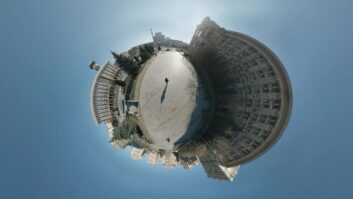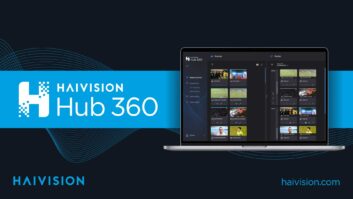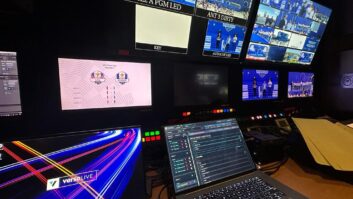
Imagine being at a football match and able to view not only instant replays of action produced by the broadcaster on your Google Glass spectacles, but dozens of perspectives on the same event recorded by fellow Glass-wearing fans ringed throughout the stadium?
It is one scenario among many being conceived for the new era of wearable computing technology by media companies excited by the prospect of cheap and inexpensive video creation, dissemination and display.
“We are looking at sporting use cases where we think there are some interesting possibilities for using Google Glass so that coverage of an event is not limited to the high-end multi-camera set-up of the broadcaster but widened to dozens, if not hundreds of fans with the Glass,” said Jeff Eddings, a director with Turner Broadcasting’s Emerging Technologies Group. “Using Glass you need never miss out on a refereeing close-call. You could review the incident from any number of perspectives almost instantly.”
Eddings said his team is “actively pursuing” such ideas with companies like Switchcam.com, Media Camp-funded software that aggregates videos from users and stitches them into video of a single event.
American tennis pro Bethanie Mattek-Sands (pictured) wore Google Glass on the practice courts at Wimbledon last year, saying that the player’s eye view it gave would provide a training aid while opening up the possibility for sports fans to view action from the participant’s point of view.
Last October, basketball players at Stanford University wore Google Glass for fans attending the event to view the action. In conjunction with CrowdOptic’s technology, fans at courtside could see the athletes’ perspective simply by pointing their mobile device in their direction. In addition, spectators were able to join a Google+ hangout or view through their own Google Glass.
Glass is one of a new breed of wearable technology that was on display at the CES show in Las Vegas last week (7-10 January). The show devoted a special area to smart watches.
Google Glass, currently non-prescription, embeds a camera for taking still images and video, a battery and a microphone. It operates by voice activation and is connected by WiFi or Bluetooth to the internet. Data and video streamed from the internet is displayed in a portion of the spectacles glass.
Google has issued about 10,000 prototype units to ‘explorers’ worldwide, many of whom have paid $1,500 for the privilege. CNN reported about 3,500 Glass users have downloaded CNN Digital’s News & Topic Alerts, developed by Turner’s Emerging Technologies. It has also enabled Google Glass-wearing users of its citizen journalist service iReport to shoot video and upload it to iReport where a CNN editor will take a judgement on whether it supports the day’s news agenda. CNN weather anchor Jenny Harrison has worn the specs live on air for viewers to see what weather forecasting is like from her perspective.
French group TDF Media Services is also exploring second screen applications with its own Glass app.
“Fans in a stadium watching a soccer match could see replayed on-demand highlights in realtime via their Glasses, receive data about the game or view goals as they are scored from other games in progress,” suggested Rami Alanko, deputy CEO Qbrick, part of the TDF Group.
Google Glass will come to market in 2014. Samsung has reportedly registered a patent for its own version of the technology, calling them ‘sports glasses’. At CES, smart glass developer Vuzix will be showing holographic optical technology, co-developed with Nokia, that allows smart glasses tech to finally fit within standard glasses frames.
Its augmented reality tech was originally designed for use by US government Special Forces, and Vuzix describes it as “a revolutionary new way of moving light within smart glasses [that] are a fraction of the size and weight of conventional prism-based optics used in competing wearable smart devices. Waveguide optics also deliver a much wider field of view for the user.” The photo shows a baseball player seen through the glasses.
By Adrian Pennington






